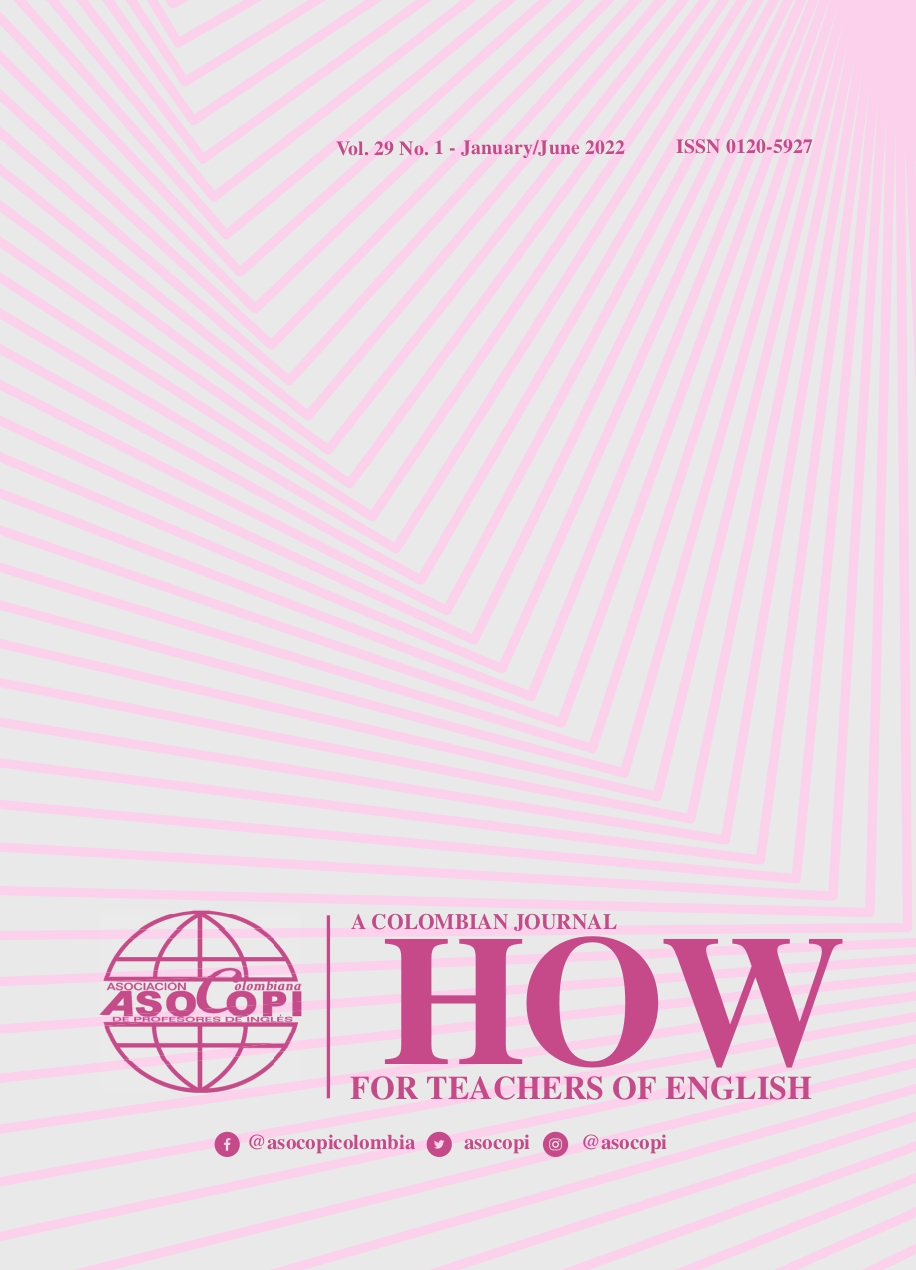Social Entrepreneurship Projects in the English Class: A Pandemic Multimodal Experience
Main Article Content
Abstract
This exploratory qualitative study shares an innovative experience with twenty-three EFL undergraduate students in the Business Administration Program at a private university in Colombia. It aimed at positioning them as problem solvers and connecting their background as sources for EFL learning. We explored how business administration students problematized their communities to propose social solutions during the pandemic. Data were collected from students’ reflective journals, students’ artifacts, and a survey. In groups, the students explored cultural practices for shopping, economy, and pet-related issues to propose a social entrepreneurship project. Eleven business projects emerged as a result of students’ socially-oriented concerns, critical skills, and multimodal experiences.
Article Details

This work is licensed under a Creative Commons Attribution-NonCommercial-NoDerivatives 4.0 International License.
The authors of the manuscripts accepted for publication in HOW journal are required to sign a nonexclusive license agreement allowing ASOCOPI to reproduce the full text on the Internet or in any other available source. Authors retain copyright of their manuscripts with the following restrictions: first publication is granted to ASOCOPI; nonexclusive agreements with third parties can be established as long as the original publication in the HOW journal is properly acknowledged.
References
Azano, A. (2011). The possibility of place: One teacher’s use of place-based instruction for English students in a rural high school. Journal of Research in Rural Education, 26(10).
Ball, S. (2003). The teacher’s soul and terrors of performativity. Journal of Education Policy. Taylor & Francis group. 18(2), 215 – 228.
Batista-Morales, N. S., Salmerón, C., & DeJulio, S. (2019). Their words, their worlds: Critical literacy in bilingual spaces, Bilingual Research Journal, 42(4), 471-490.
Benwell, B., & Stokoe, E. (2006). Discourse and Identity. Edinburgh University Press.
Chell, E. (2007). Social enterprise and entrepreneurship: Towards a convergent theory of the entrepreneurial process. International Small Business Journal, 25, 5-26.
Comber, B., & Kamler, B. (2004). Getting out of deficit: Pedagogies of reconnection. Teaching Education, 15(3), 293-310.
Demarest, A. B. (2015). Placed-based curriculum design. Exceeding standards through local. Taylor and Francis group.
Fairclough, N. (2001). Language and power. Pearson Education.
Freire, P., & Macedo, D. (1987). Reading the word and the world. Greenwood Publishing Group, Inc.
Gee, J. P. (1996). Social linguistics and literacies: Ideology in discourses. Taylor & Francis.
Gil, L. (2018). Critical literacy development in an EFL classroom [Unpublished Master’s thesis]. Universidad Distrital Francisco José de Caldas. Bogotá, Colombia.
Heigham, J., & Croker, R. A. (2009). Qualitative research in applied linguistics: A practical introduction. Palgrave Macmillan.
Huybrechts, B., & Nicholls, A. (2012). Social entrepreneurship: Definitions, drivers and challenges. Routledge.
Janks, H. (2012). The importance of doing critical literacy. English Teaching and Critique, 11(1), 150-163.
Janks, H., Dixon, K., Ferreira, A., Granville, S., Newfield, D. (2014). Doing critical literacy. Routledge, https://doi.org/10.4324/9780203118627
Jewitt, C. (2008). Multimodality and literacy in school classrooms. Review of Research in Education, 32(1), 241–267.
Kress, G. (2003). Literacy in the New Media. Routledge.
Lewison, M., Flint, A. S., & Van Sluys, K. (2002). Taking on critical literacy: The journey of newcomers and novices. Language Arts, 79(5), 382–392.
Luke, A. (2012). Critical literacy: Foundational notes. Theory Into Practice, 51(1), 4-11.
Medina, R., Ramírez, M., & Clavijo, A. (2015). Reading the community critically in the digital age: A multiliteracies approach. In P. Chamness Miller, M. Mantero, & H. Hendo (Eds.). ISLS Readings in Language Studies (Vol. 5) (pp. 45-66). The International Society for Language Studies, Inc.
Menken, K. (2006). Teaching to the test: How no child left behind impacts language policy, curriculum, and instruction for English language learners. Bilingual Research Journal, 30(2), 521–546.
Miles, M., & Huberman, M. (2000). Métodos para el manejo y el análisis de datos. In C. Denman & J. Haro (Eds.), Por los rincones: Antología de métodos cualitativos en la investigación social (pp. 253 - 301). El Colegio de Sonora.
Moll, L., (1994). Literacy research in community and classrooms: A sociocultural approach. In B. Robert, M. P. Ruddell, & H. Singer (Eds.). Theoretical models and processes of reading (4th ed.) (pp. 179-207). Newark.
Rossman, G. B., & Rallis, S. F. (2003). Learning in the field: An introduction to qualitative research. Sage Publications.
Sharkey, J., Clavijo, A., & Ramírez, M. (2016). Developing a deeper understanding of Community-based pedagogies with teachers in Colombia. Journal of Teacher Education, 67(4), 306-319.
Short, K., & Burke, C. (1991). Creating curriculum: Teachers and students as a community of learners. Heinemann Educational Publishers.
Usma Wilches, J. (2009). Education and language policy in Colombia: Exploring processes of inclusion, exclusion, and stratification in times of global reform. Profile: Issues in Teachers´ Professional Development, 11(1), 123-141.
Vasquez, V., & Janks, H., & Comber, B. (2019). Critical literacy as a way of being and doing. Language Arts, 96(2), 300-311.
Walqui, A. (2006). Scaffolding instruction for English language learners: A conceptual framework. International Journal of Bilingual Education and Bilingualism, 9(2), 159–80.
Walsh, M. (2010). Multimodal literacy: What does it mean for classroom practice? Australian Journal of language and literacy, 33(3), 211-239.





